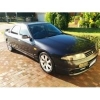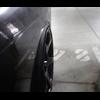Fs: R33 Gts-t Rb25/30 363rwkw
Announcements
-
Similar Content
-
Latest Posts
-
By joshuaho96 · Posted
One piece driveshaft I would recommend a dual CV setup otherwise stick to OEM. I have heard most one piece driveshafts cause excess vibration otherwise. The transmission grind I'm quite familiar with. You can try shockproof gear oil, otherwise you need a new transmission. The shifter is extremely simple on these cars. If you want pull apart the assembly and replace the plastic bushing but I doubt that fixes anything. The tail light issue is very common, unfortunately new tail lights are long discontinued. The trunk antenna going up always is because your radio doesn't have a true power antenna control, just remote amp power signal. There is a blank switch plate that you can pop out and install a switch for this or alternatively source a head unit that has proper antenna control. Throttle body sticking you have to disambiguate by disconnecting the cable and seeing if the linkages are the problem or something else. There is a procedure to adjust them, refreshing them is also somewhat involved if that's the issue. I have dealt with many of these issues. Old cars really are fractals of problems. The more you fix the more you discover there is to fix. -
Welp, you've got a long list of experiences right there. I'd say you're on the right path.
-
By Dose Pipe Sutututu · Posted
That's correct, suits my requirements a bit better. Sure there are also numpties there, however it's generally a different vibe and more my kind of vibe. -
By soviet_merlin · Posted
Oh, right. In that case there is no rush. It's the car entries that are quite limited and can sell out quickly. -
All I want to do is be a spectator and check out the cars in the show and shine
-











Recommended Posts
Create an account or sign in to comment
You need to be a member in order to leave a comment
Create an account
Sign up for a new account in our community. It's easy!
Register a new accountSign in
Already have an account? Sign in here.
Sign In Now